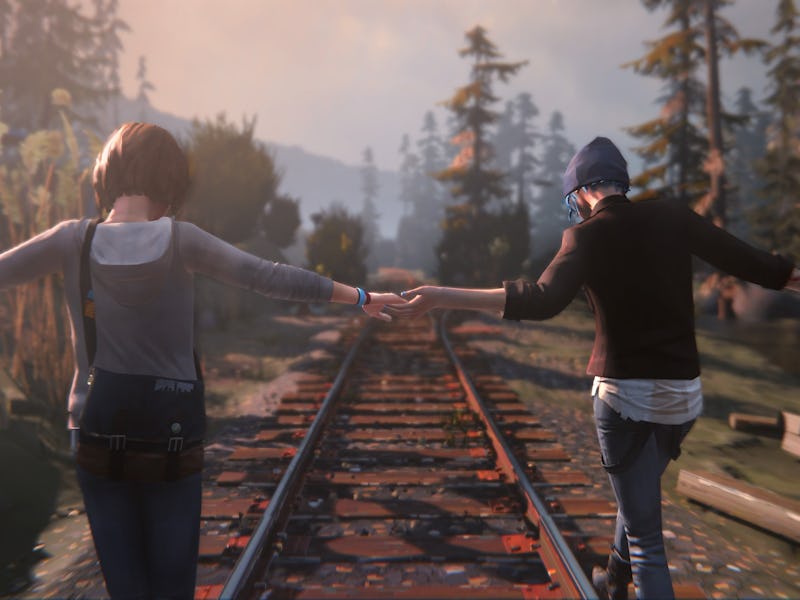8 Years Later, Square Enix's Supernatural Teen Drama Remains Timeless
The butterfly effect.

As a teenager, you tend to question every decision you’ve ever made and imagine what you might do differently. Maybe it’s so you don’t embarrass yourself or say the wrong thing. In 2015, Square Enix’s episodic game Life is Strange took that idea to the extreme by putting players in the shoes of a time-controlling teen whose world may literally end if she does the wrong thing. Eight years later, its depiction of the difficulties of teenage life and the ways we form relationships is still worth revisiting.
Time in a bottle
The time loop has become a genre unto itself, placing characters in circumstances where they repeat the same day over and over again. Bill Murray’s classic Groundhog Day remains the touchstone for this concept, but the trope has also appeared in video games like Deathloop and Twelve Minutes. This idea of repeating time is at the heart of Life is Strange.
Who wouldn’t want a chance to do over their embarrassing choices in high school?
After witnessing the murder of a student in the school bathroom, protagonist Max discovers that she has the ability to rewind time. As a teenager mostly worried about her art (photography), her lack of friends, and the general anxiety about the impending future, this ability feels like a safe haven.
In the spirit of choice-heavy games like those from Telltale, there is a major emphasis placed on the impact of your choices on the world around you, but the key is understanding when to live with your mistakes and when to change them.
Playing The Walking Dead and seeing “that will be remembered” makes you want to change your answer, but Life is Strange challenges the player to think if that is actually the best path forward by giving them the power to do just that. This is displayed early in the game when Max’s new friend Chloe attempts to get justice for the would-be school shooter but then finds herself in more trouble.
While Life is Strange has high stakes — a storm is on its way to wipe the town of Arcadia Bay right off the map — it is more worried about telling human stories.
Do it all again
It turns out the girl that Max reversed time to save at the beginning of the game is her estranged friend Chloe. Together they go down a rabbit hole that reveals the shady dealings going on in their town, including the demise of another girl Chloe knew.
Relationships and how we choose to present ourselves are themes at the heart of Life is Strange.
Within this story, both Max and Chloe mostly struggle to make headway due to the fractured relationships they have with those around them. Parents, teachers, and school bullies all get time to be complex characters, but mostly the game depicts the growing relationship between Chloe and Max.
The ability to run back and forth through time and see how conversations play out differently lets you see new dimensions to every character, story, and relationship. It tasks the player with deciding on the version of reality they want to live in; Or rather, it provides this very specific kind of wish fulfillment. Much like the composed photographs that Max takes throughout the game, the constructed version of life and how we remember our experiences is not a passive thing. It is a monument built choice by choice.
The game’s climactic ending condenses all of this into a single choice with massive consequences. While it may seem like an easy decision at first glance, the more selfish decision is incredibly powerful as an argument. Sometimes, you need to let the past go and move forward in a new direction, and despite any regrets, you just have to refrain from looking back.
Even though the episodic release of Life is Strange has gone the way of the dinosaur in the gaming industry, this story is remarkably poignant. Sometimes I wish I could rewind the clock and play it for the first time all over again.
Life is Strange is currently available on PC, PlayStation 4, Xbox One consoles, and Nintendo Switch.